In the heart of Egypt, in Luxor, lies the village of Qurna—a stronghold of alabaster craftsmanship that dates back to ancient times, but it became more formally recognized during the ancient Egyptian era, around 3000 BCE.
However, the modern craft of alabaster in Qurna gained prominence in the 20th century, particularly after the mid-1900s, as artisans began to revitalize traditional techniques and cater to tourism.
The village is now well-known for its skilled craftsmen and their ability to produce intricate alabaster items that reflect both ancient and contemporary designs.
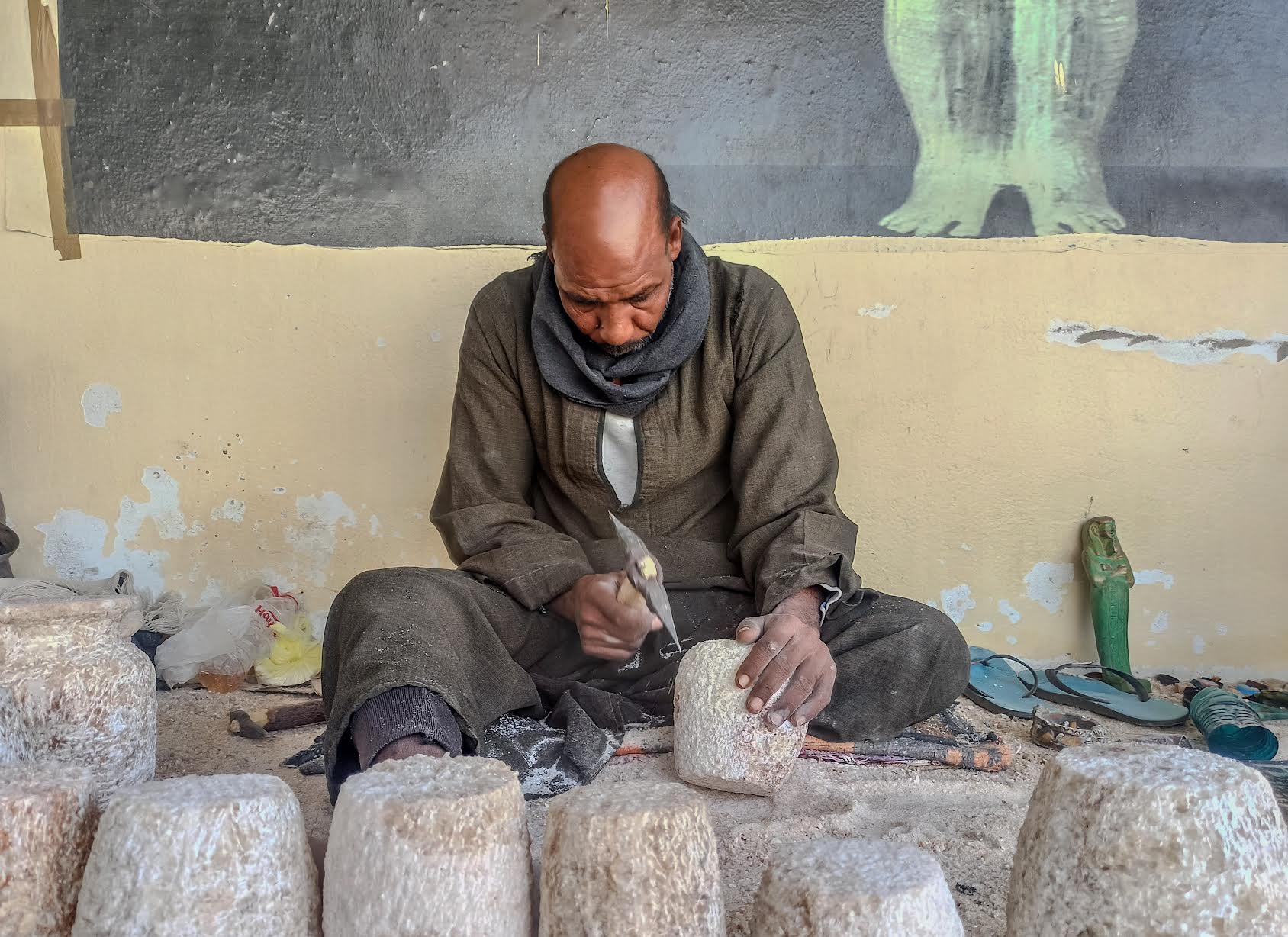
The Legacy of Alabaster
Alabaster has long been revered by ancient Egyptians for its beauty and versatility.
Historically, ancient Egyptians utilized this stone to create vessels for offerings to gods and as decorative pieces containing perfume and oil.
Today, Mohamed Saeed, a passionate photographer dedicated to capturing the essence of this craft through his lens, explains that “artisans in Qurna continue this legacy, crafting stunning replicas of ancient designs that are cherished by tourists and collectors alike.”
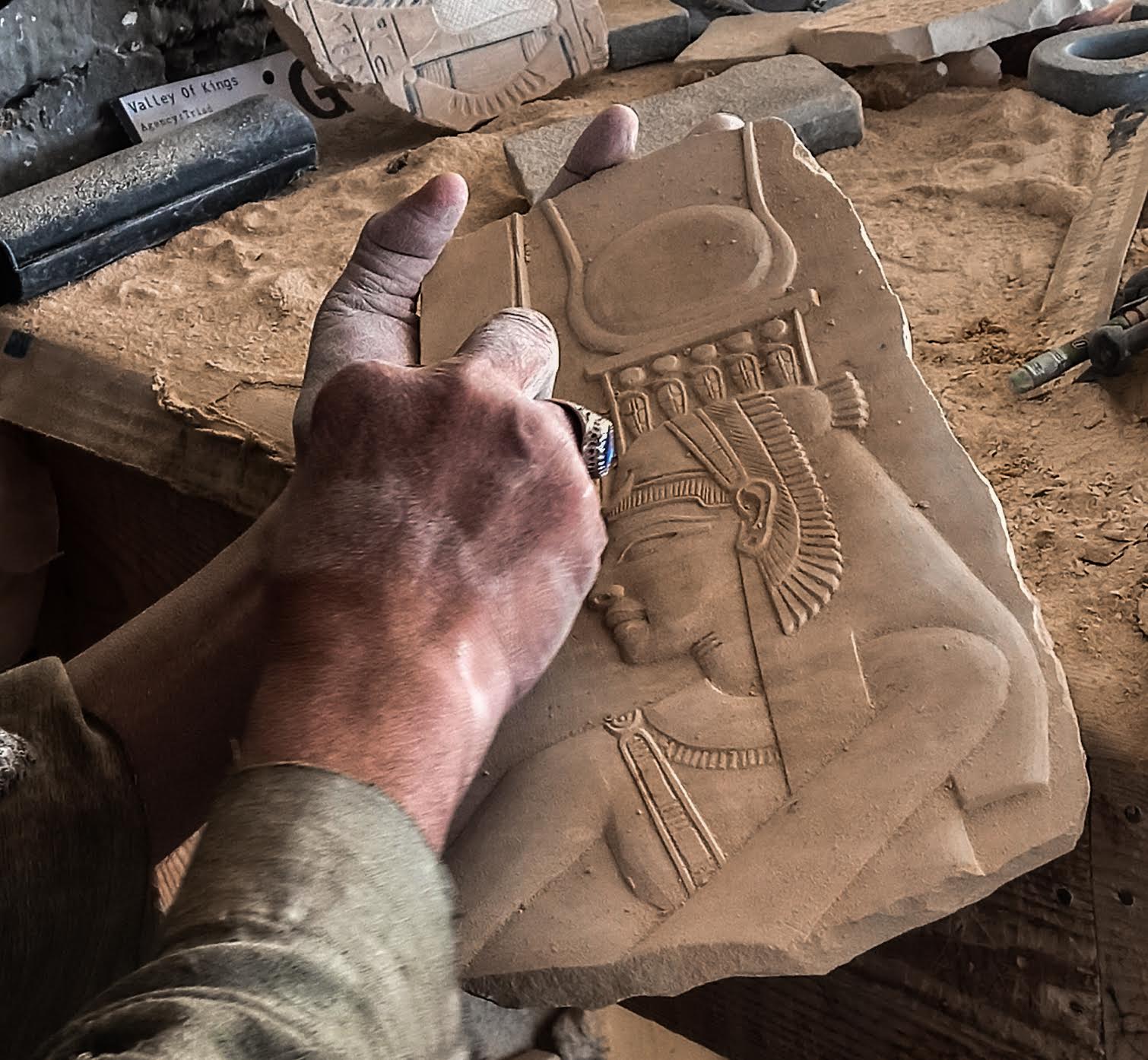
Saeed’s photographs vividly illustrate this sentiment, showcasing the skilled hands of artisans as they transform raw alabaster into breathtaking works of art.
Transforming alabaster into stunning works of art involves several key steps.
Artisans start by selecting high-quality alabaster based on its color and texture, followed by careful design planning. They then use hammers and chisels to shape the stone, adding intricate details with finer tools.
After smoothing the surface with abrasives, they polish the piece for a beautiful finish. Finally, if necessary, they assemble multiple components, resulting in exquisite sculptures and decorative items that showcase traditional craftsmanship.
The Craftsmanship Process
The process of crafting alabaster is as ancient as the stone itself. Artisans employ simple yet effective tools—hammers, chisels, and saws—to carve and shape the stone. Despite the primitive nature of these tools, the craftsmanship requires immense skill and patience. Each strike of the hammer and each precise cut is a testament to generations of knowledge passed down through families.
As for the final product, Saaed mentions that it takes the form of statues that vary in sizes and shapes, all motifs from ancient Egypt, whether a pharaoh or a deity. Additionally, artisans create plaques with Egyptian engravings, along with vessels and small amulets like the scarab beetle.
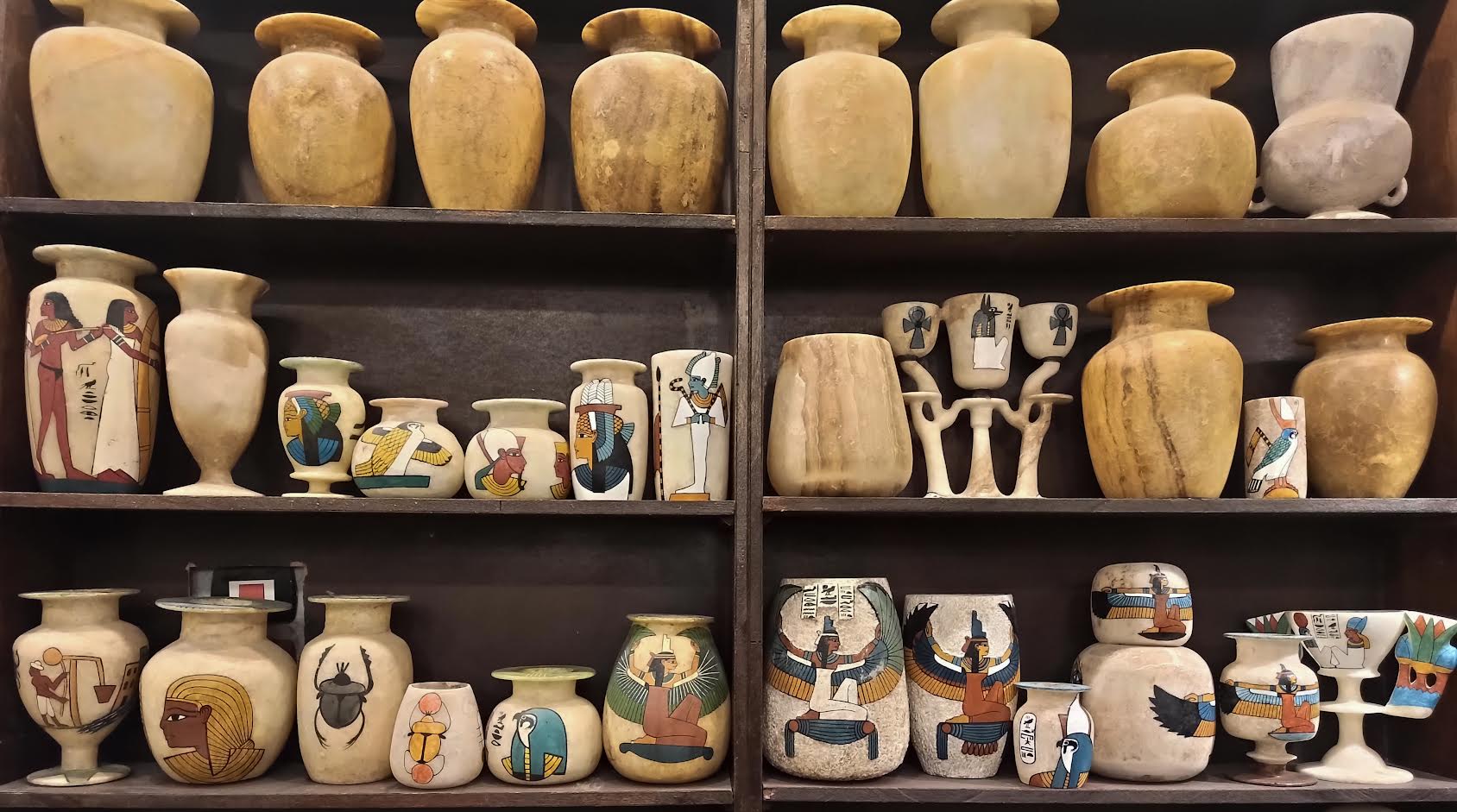
In some of Saeed’s striking photographs, craftsmen delicately chisel away at a block of alabaster. These moments capture the physical labor involved and the deep connection artisans have with their craft.
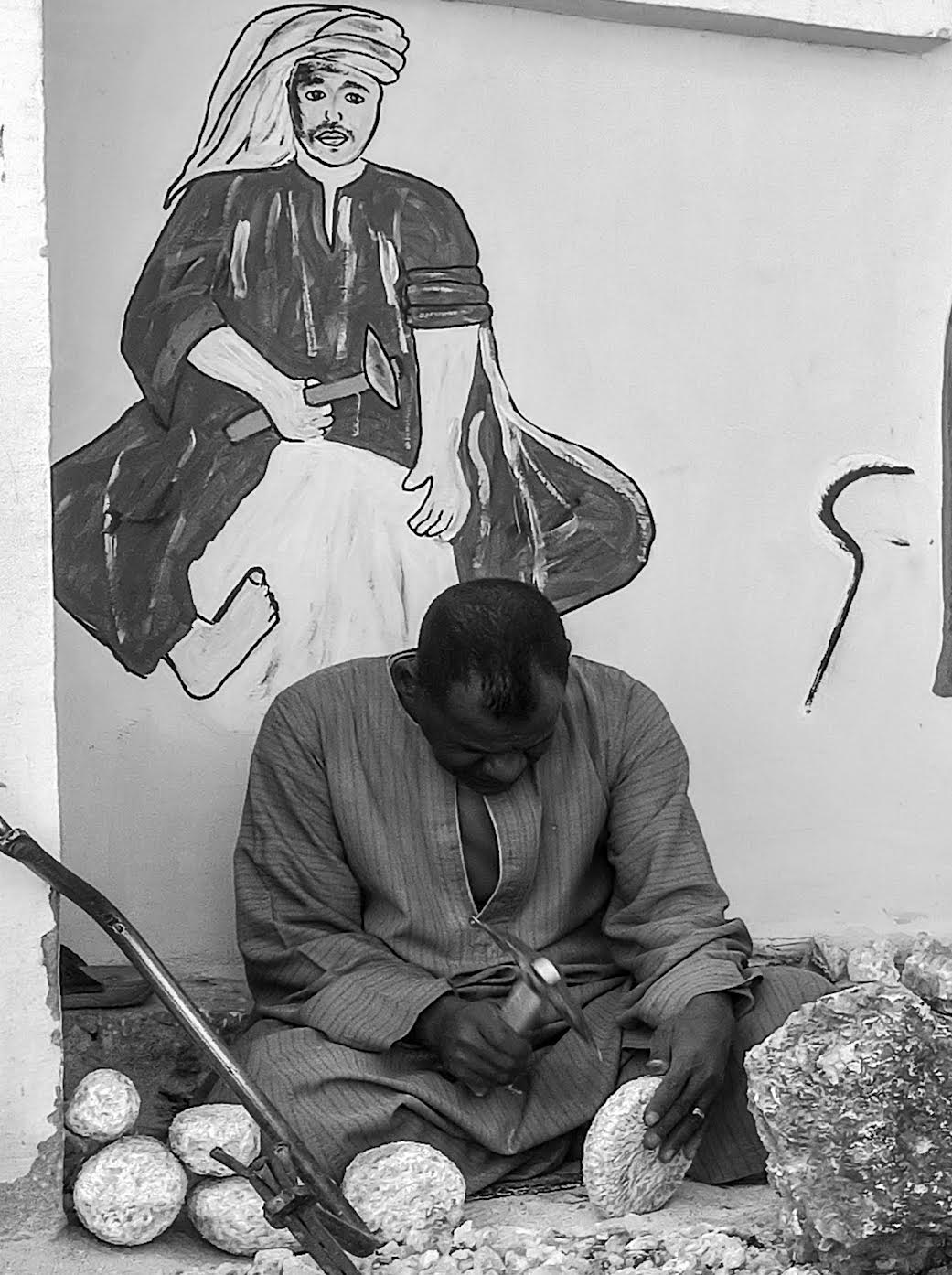
The Colors of Alabaster
In the making process, alabaster is known for its rich variety of colors—white, black, gray, and green—each specific color chosen to suit particular items or designs.
“Ultimately, the essence of alabaster remains consistent, regardless of its color,” Saeed clarifies in an interview with Egyptian Streets.
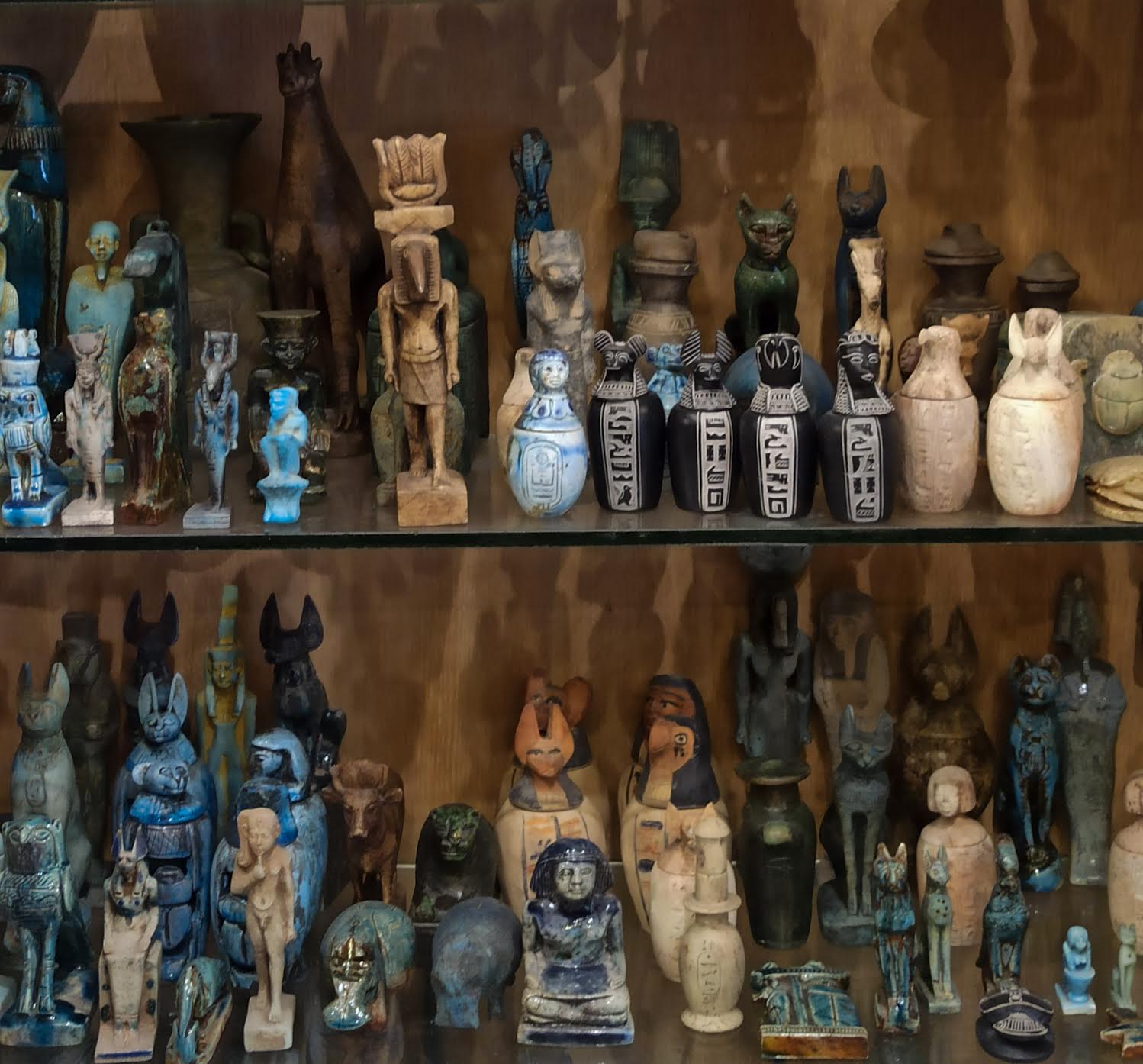
”These colors often play a significant role in the final piece, influencing its design and purpose. Saaed’s photography captures this vibrancy beautifully,” Saeed says.
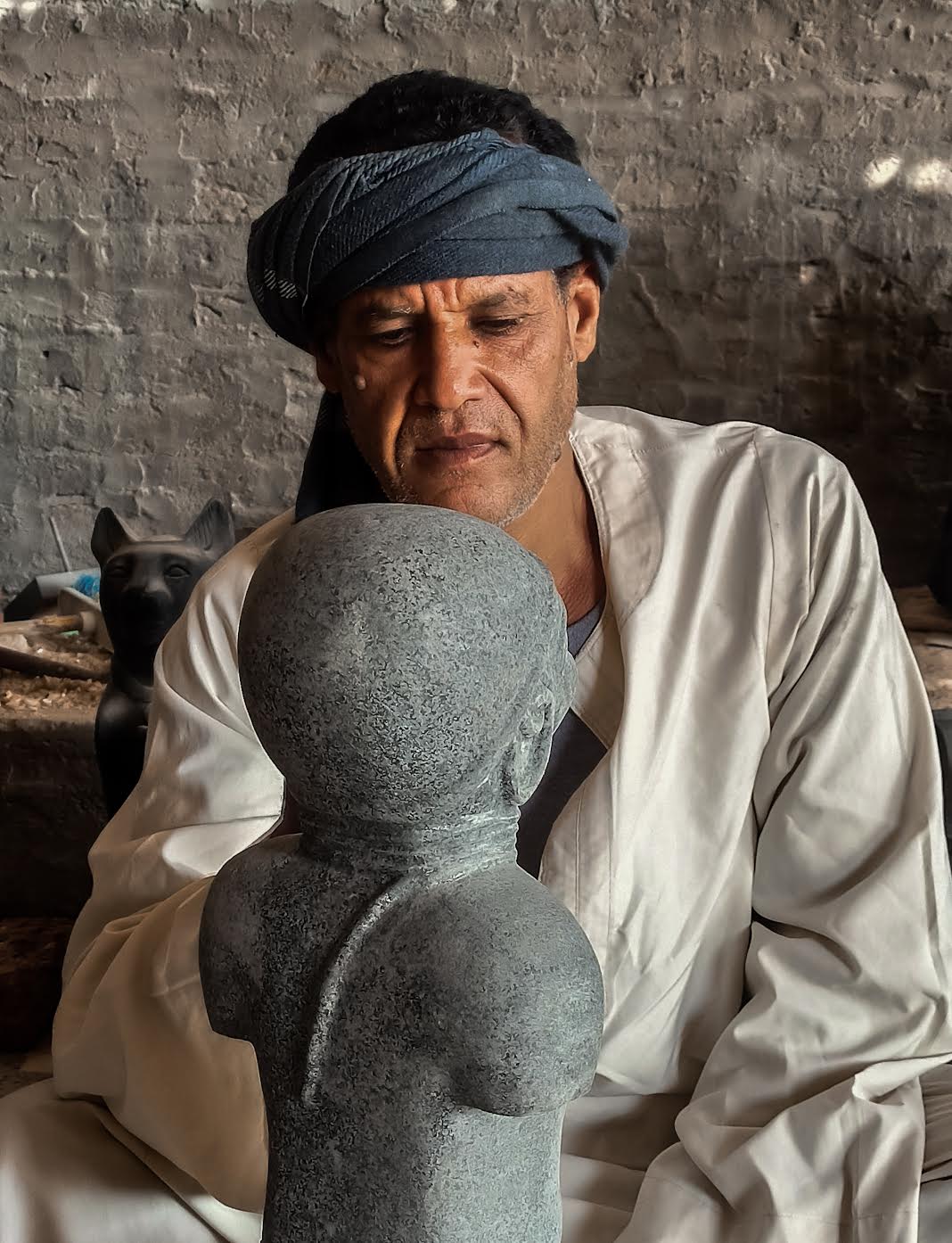
Preserving Tradition in Modern Time
Despite the rapid changes in the world around them, the artisans of Qurna remain steadfast in their commitment to preserving this ancient craft.
Saeed notes that “many families have been involved in alabaster production for generations, ensuring that techniques and traditions are not lost to time.”

Through his lens, Saeed provides a unique window into the cultural significance of alabaster craftsmanship. His photos depict the physical act of creation, they capture the soul of a community dedicated to preserving Egyptian heritage.
Each image invites viewers to appreciate the artistry and resilience of the artisans who work tirelessly to keep this ancient craft alive.
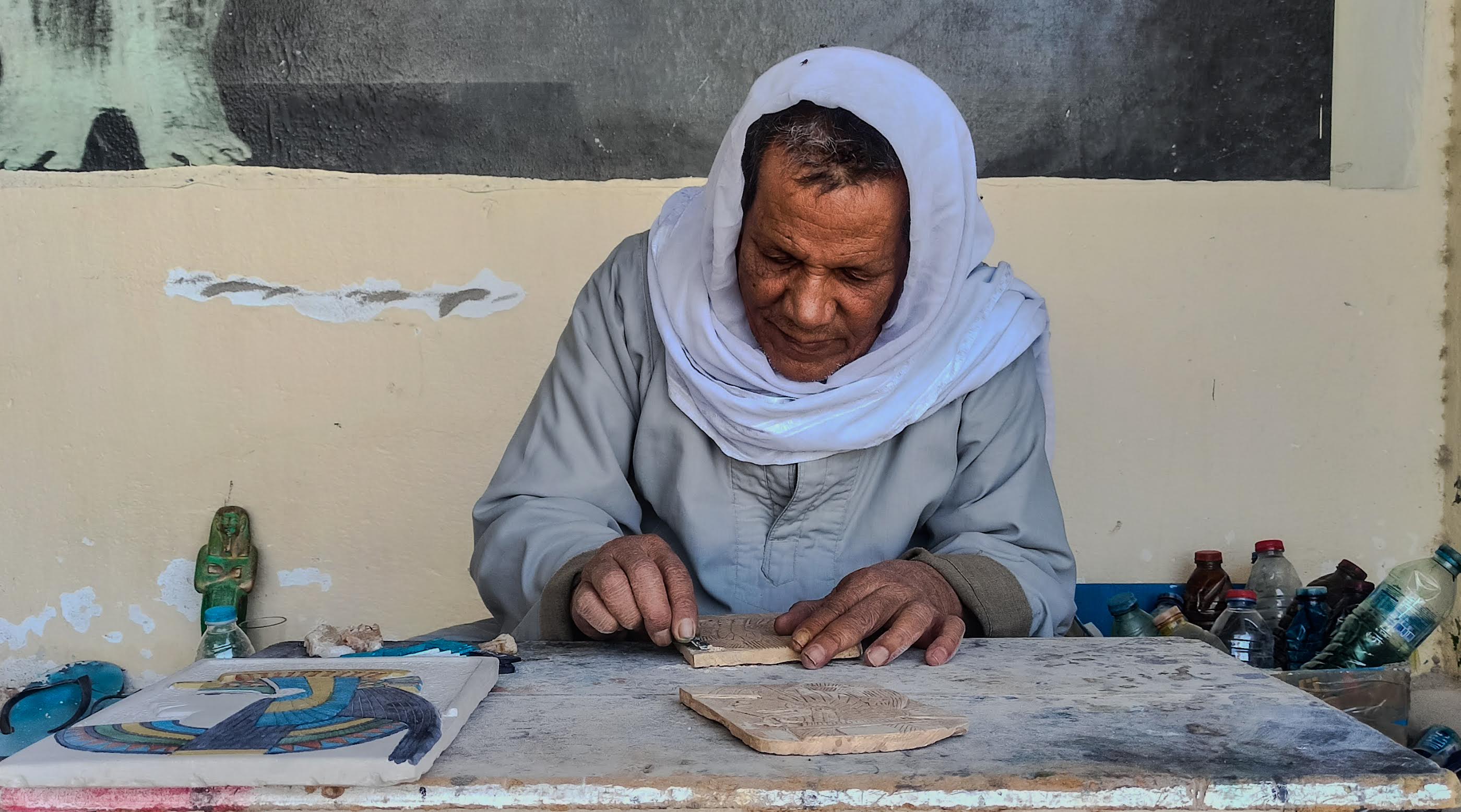
The art of alabaster in Qurna is not merely a trade; it is a living testament to Egypt’s rich history and cultural identity. Through the lens of Mohamed Saeed, we are reminded of the importance of preserving these traditions and the beauty that arises when the past meets the present.






Comments (0)